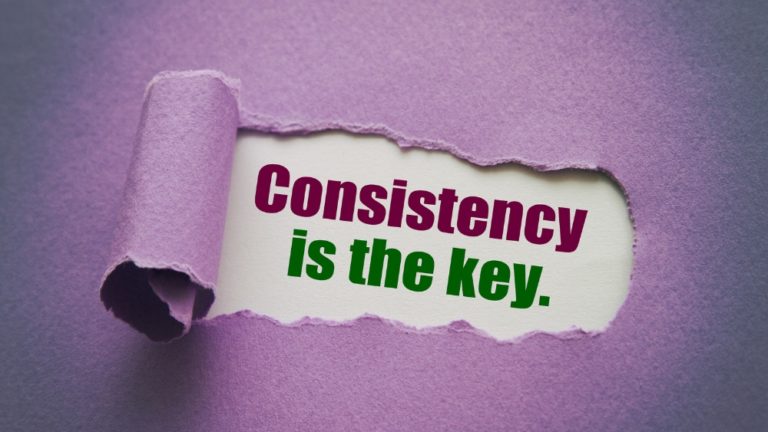Mastering Mindfulness In Leadership: Boost Your EQ and Focus
Welcome to the world of mindful leadership! Have you ever wondered how some leaders seem to navigate the challenges of their roles with grace and composure, while others struggle? The answer lies in the practice of mindfulness. In this article, we’ll explore the concept of mindfulness in leadership, its benefits, and how you can cultivate this powerful skill to boost your EQ and focus.
Mindfulness is a state of active, open attention to the present moment. It means being fully engaged in the here and now, without being consumed by distractions or overwhelmed by emotions. By mastering mindfulness, you can transform your leadership style, enhance your emotional intelligence, and achieve greater focus in your daily tasks.
So, are you ready to embark on this exciting journey of self-discovery and growth? Let’s dive in and learn about the importance of mindfulness in leadership, the key traits of mindful leaders, and practical exercises to develop this skill. Together, we’ll unlock the secrets of effective leadership and unleash your full potential.
The Importance of Mindfulness in Leadership
In today’s fast-paced and ever-changing world, the ability to remain calm, focused, and emotionally balanced is more important than ever. Mindfulness offers a powerful solution to the challenges faced by leaders in various industries, enabling them to make better decisions, build stronger relationships, and maintain a healthy work-life balance.
The connection between mindfulness and effective leadership
The connection between mindfulness and effective leadership is undeniable. Research shows that leaders who practice mindfulness are more likely to exhibit higher levels of emotional intelligence, better decision-making abilities, and a more inclusive leadership style. In fact, many leadership training programs now include mindfulness exercises, with instructors recognizing the value of this skill in cultivating strong leaders.
When leaders are mindful, they are better equipped to handle the challenges and uncertainties that come with their roles. They can navigate difficult situations with greater ease and are more adept at resolving conflicts and managing change. In short, mindfulness can be the key that unlocks the door to effective leadership.
Mindfulness is a crucial skill for effective leadership, as it improves emotional intelligence, decision-making, inclusivity, conflict resolution, and change management.
Benefits of incorporating mindfulness in leadership
There are several benefits to incorporating mindfulness into your leadership practice. Some of these include:
- Improved emotional intelligence (EQ): Mindfulness helps you become more aware of your emotions and the emotions of others, leading to better empathy, understanding, and decision-making.
- Enhanced focus and attention: By practicing mindfulness, you can strengthen your ability to concentrate on the task at hand, minimizing distractions and increasing productivity.
- Reduced stress and burnout: Mindful leaders are better equipped to manage their stress levels and maintain a healthy work-life balance, resulting in increased resilience and reduced risk of burnout.
- Greater adaptability: Mindfulness allows you to embrace change and uncertainty, cultivating a growth mindset and fostering innovation within your organization.
Key Traits of Mindful Leaders
Now that we’ve explored the importance of mindfulness in leadership, let’s take a closer look at the key traits that define mindful leaders. These traits are crucial in distinguishing great leaders from merely good ones and form the foundation for a successful leadership career.
1. Self-awareness
Self-awareness is the cornerstone of mindfulness. It involves recognizing your emotions, thoughts, and behaviors and understanding how they affect your actions and decisions. By being self-aware, you can identify your strengths and weaknesses, develop your leadership skills, and create a positive work environment for your team.
- Reflect on your actions: Regularly take time to evaluate your decisions and actions, considering their impact on your team and organization.
- Seek feedback: Encourage open communication with your team members and actively seek their feedback on your performance.
- Embrace personal growth: Recognize areas for improvement and embrace opportunities to grow and develop as a leader.
2. Emotional intelligence
Emotional intelligence (EQ) is a critical component of effective leadership. It involves the ability to recognize, understand, and manage your emotions and the emotions of others. Mindful leaders with high EQ can build strong relationships, foster collaboration, and create a positive work culture.
- Practice empathy: Put yourself in the shoes of your team members and try to understand their perspectives, needs, and challenges.
- Manage your emotions: Recognize when your emotions are influencing your decisions and take steps to regulate them, ensuring that you make objective and rational choices.
- Communicate effectively: Use active listening and clear, concise language to convey your thoughts and ideas, fostering open and honest dialogue with your team.
3. Presence in the moment
A key aspect of mindfulness is the ability to be fully present in the moment. This trait allows mindful leaders to give their undivided attention to the task at hand, make better decisions, and respond effectively to challenges and opportunities.

- Eliminate distractions: Create a work environment that minimizes distractions, allowing you and your team members to focus on your tasks and goals.
- Practice active listening: When engaging with others, be fully present and attentive, demonstrating that you value their input and ideas.
- Cultivate patience: Accept that some tasks and decisions require time and thought, resisting the urge to rush or make hasty choices.
4. Resilience
Resilience is the ability to bounce back from setbacks and adversity. Mindful leaders demonstrate resilience by maintaining a positive attitude, learning from their mistakes, and adapting to new challenges and opportunities.
- Embrace failure as a learning opportunity: Recognize that failure is a natural part of growth and development, and use it as an opportunity to learn and improve.
- Practice self-compassion: Treat yourself with kindness and understanding when you face setbacks, recognizing that no one is perfect and that you are doing your best.
- Maintain a growth mindset: Believe in your ability to learn, grow, and overcome challenges, focusing on the process rather than the outcome.
5. Rational thinking
Rational thinking is the ability to make decisions based on objective information and sound reasoning. Mindful leaders are skilled at gathering data, analyzing situations, and making well-informed choices that benefit their teams and organizations.
- Gather information: Seek out relevant data and information to inform your decision-making, keeping an open mind and considering various perspectives.
- Evaluate options: Weigh the pros and cons of each option, taking into account the potential risks and benefits, as well as the long-term consequences.
- Act decisively: Once you have analyzed the situation and considered the available options, make a decision and take action, demonstrating your confidence and commitment to the chosen course.
The 5 Cs of Mindful Leadership
In the quest for mastering mindfulness in leadership, we’ve distilled the essential traits of mindful leaders into The 5 Cs of Mindful Leadership. These core principles provide a solid foundation for you to build upon in your journey to become a more mindful and effective leader. Let’s dive into each one and see how they can transform your leadership style.
1. Composure
Composure, or the ability to maintain calm and self-control in challenging situations, is a hallmark of mindful leaders. In the heat of the moment, it’s easy to let our emotions get the better of us, but a composed leader can navigate turbulent waters with grace and poise.
Regular meditation practice can help you cultivate composure by training your mind to stay focused and steady amidst chaos. As Janice Marturano, a renowned mindfulness expert, has said, “Meditation is like a mental gym where you develop the mental muscles of calm and clarity.”
2. Compassion
Compassion is the ability to understand and empathize with the feelings and experiences of others. Mindful leaders recognize the importance of building strong connections with their team members, and they know that compassion fosters an environment of trust, collaboration, and respect.
By practicing mindful listening and empathic communication, you can develop your capacity for compassion. This not only improves your relationships with your team but also contributes to a more inclusive and supportive work culture.
Developing your capacity for compassion through mindful listening and empathic communication can improve relationships with your team and contribute to a more inclusive and supportive work culture.
3. Connectivity
Connectivity is all about fostering strong relationships and building networks within your organization. A mindful leader understands the importance of collaboration and teamwork, and they actively work to create an environment where people can connect and share ideas freely.
To enhance connectivity, consider organizing workshops, regular team meetings, or informal gatherings that encourage open communication and collaboration. This will help your team build trust and rapport, which ultimately leads to more effective teamwork and problem-solving.
4. Curiosity
A curious leader is a lifelong learner, always eager to explore new ideas and challenge assumptions. Curiosity keeps you open-minded, adaptable, and primed for innovation – all essential qualities in the ever-changing landscape of business and leadership.
To cultivate curiosity, seek out new experiences, learn from different perspectives, and ask open-ended questions that inspire critical thinking and creativity. Embrace the unknown and view challenges as opportunities to grow and learn.

5. Caliber
The caliber of a mindful leader is defined by their ability to demonstrate integrity, resilience, and an unwavering commitment to their values and vision. High-caliber leaders inspire trust and respect, and they set the standard for excellence within their organization.
To raise your caliber, focus on developing your core competencies and resiliency. This might involve attending professional development courses, seeking mentorship, or engaging in self-reflection and personal growth. As Bill George, a prominent leadership expert, once said, “Authentic leadership is staying true to who you are and helping others be true to who they are.”
Transforming into a Mindful Leader
Becoming a mindful leader is a journey, not a destination. It requires consistent effort, self-reflection, and a willingness to learn and grow. Let’s explore some strategies and practices to help you transform into a more mindful and effective leader.
The role of meditation in mindful leadership
Meditation is a powerful practice for developing mindfulness, and it has been shown to improve focus, emotional intelligence, and stress resilience – all essential qualities for effective leadership. By training your mind to stay present and aware, you can cultivate a more mindful approach to your work and interactions with others.
Regular meditation practice can help you develop the mental clarity and calm needed to navigate complex situations and make sound decisions. Research has shown that even just a few minutes of meditation a day can have significant positive effects on your mental and emotional well-being. So, whether you’re a seasoned practitioner or new to meditation, making it a part of your daily routine can have a profound impact on your leadership effectiveness.
Practical exercises to develop mindfulness
Developing mindfulness doesn’t have to be limited to formal meditation practice. There are many practical exercises and techniques that you can integrate into your daily life to cultivate greater awareness and presence. Some examples include:
- Mindful breathing: Whenever you feel stressed or overwhelmed, take a few moments to focus on your breath. Inhale deeply, exhale slowly, and notice the sensation of your breath as it moves in and out of your body. This simple practice can help you return to the present moment and regain a sense of calm and clarity.
- Body scan: Take a few minutes each day to perform a mental scan of your body, starting from your toes and working your way up to the top of your head. Notice any sensations, tension, or discomfort, and use your breath to release and relax those areas.
Integrating mindfulness into daily leadership practices
Incorporating mindfulness into your daily leadership routine can help you become more present, focused, and empathetic in your interactions with others. Here are some ways to weave mindfulness into your workday:
- Begin your day with intention: Start each morning by setting a clear intention for the day, such as being fully present in each meeting or practicing active listening with your team members.
- Take mindful breaks: Throughout the day, take short breaks to reset and refocus. Use these moments to practice mindful breathing or to simply check in with yourself and re-center your attention.
Incorporating mindfulness into your daily leadership routine can improve your focus and empathy in interactions with others, and can be achieved by setting daily intentions and taking mindful breaks.
Mindful Leadership in Action
Now that we’ve discussed the importance of mindfulness in leadership and explored some practical strategies for cultivating it, let’s dive into what it looks like when mindful leaders put these skills into action. We’ll discuss how to create a mindful organizational culture, enhance team performance, and manage stress while maintaining balance as a mindful leader.
Creating a mindful organizational culture
A mindful organizational culture starts with the leader embodying the values of mindfulness, such as self-awareness, compassion, and presence in the moment. As a leader, you can demonstrate these values by actively listening to your team members, showing empathy, and fostering a safe environment for open communication. Furthermore, consider providing resources and opportunities for your team to learn and practice mindfulness, such as workshops, meditation sessions, or quiet spaces to recharge.
Encourage your team to embrace the mindfulness principles, and make it clear that this is a priority for the organization. Recognize and celebrate the efforts of employees who are embodying mindfulness in their work. By doing so, you will create an environment where mindfulness is not merely a buzzword, but a core value that drives the actions and decisions of your team.

Lastly, integrate mindfulness into your organization’s policies and processes. This could include incorporating mindful practices, such as regular check-ins and debriefs, into your meeting structures or implementing flexible work arrangements to support work-life balance.
Enhancing team performance through mindful leadership
By practicing mindful leadership, you can significantly enhance your team’s overall performance. A mindful leader is attuned to the needs and strengths of their team members, allowing them to provide tailored support and guidance.
Being present and truly listening to your team enables you to identify potential issues before they escalate, address concerns with empathy, and offer timely feedback, ultimately leading to a more engaged and high-performing team. When team members feel seen, heard, and valued, they are more likely to be motivated and committed to achieving the organization’s goals.
Managing stress and maintaining balance as a mindful leader
As a mindful leader, managing stress and maintaining balance are crucial aspects of your role. By practicing mindfulness, you will develop a greater self-awareness of your emotions, thoughts, and stressors, allowing you to manage them more effectively.
Incorporate regular mindfulness practices into your routine, such as meditation, deep breathing exercises, or mindful walking, to help you stay centered and calm amidst the challenges of leadership. Remember that self-compassion is an essential component of mindfulness, so be kind to yourself and acknowledge your progress, even when things don’t go as planned.
Moreover, mindful leadership involves recognizing the importance of work-life balance, not only for yourself but for your team as well. Encourage your team to take breaks, prioritize self-care, and establish boundaries between work and personal life. By modeling these behaviors yourself, you will create a healthier, more sustainable work environment for everyone involved.
FAQs
1. How does mindfulness improve decision-making in leadership?
Mindfulness improves decision-making in leadership by increasing self-awareness, enhancing emotional intelligence, and promoting rational thinking. These qualities enable leaders to make more informed, thoughtful, and balanced decisions in both short-term and long-term contexts.
2. Can mindfulness be learned, or is it an innate trait?
Mindfulness can absolutely be learned through practice and dedication. While some individuals may naturally possess certain mindful qualities, anyone can develop and strengthen their mindfulness skills through consistent practice and application in their daily lives.
3. How can I measure the impact of mindfulness on my leadership effectiveness?
To measure the impact of mindfulness on your leadership effectiveness, observe changes in your decision-making abilities, emotional intelligence, stress management, and team performance. You may also gather feedback from your team members and colleagues to gain insight into how your mindful leadership has positively impacted the work environment and overall organizational culture.
4. What are some common challenges leaders face when trying to practice mindfulness?
Some common challenges leaders face when trying to practice mindfulness include finding the time to dedicate to mindfulness practices, overcoming distractions, and managing the expectations and pressures that come with leadership roles. It’s essential to be patient with yourself and prioritize self-compassion as you navigate these challenges.
Conclusion
Mindful leadership is an invaluable skill for any leader, regardless of the industry or organization. By cultivating mindfulness through practices such as meditation and self-reflection, leaders can develop essential qualities like self-awareness, emotional intelligence, and resilience. By embodying these qualities and putting them into action, mindful leaders can create a thriving organizational culture that promotes well-being, enhances team performance, and achieves sustainable success.
Remember that mindfulness is not a one-time accomplishment, but a lifelong journey. So, continue to practice, learn, and grow as a mindful leader, and watch as your organization flourishes under your guidance.
I wish you the best! Fabian.
Share with your Friends:






